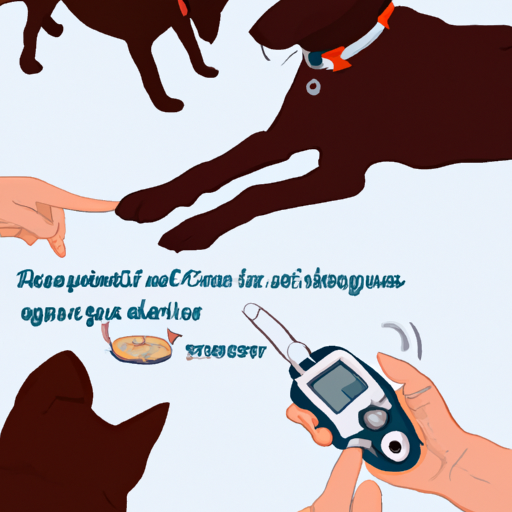Checking your beloved pet’s blood sugar levels is an essential part of managing diabetes in dogs. With the right knowledge and tools, you can monitor your canine companion’s health effectively, ensuring they live a comfortable, normal life despite having diabetes. This guide will walk you through the process of checking blood sugar in dogs, step by step.
H2: Understanding Canine Diabetes
Just as it is in humans, diabetes is a serious health condition in dogs that requires careful management. It’s essentially a disorder where the dog’s body can’t produce enough insulin or use it properly. Insulin is a hormone that helps regulate blood sugar levels. When there’s an insulin deficiency, your dog’s blood sugar can get dangerously high, leading to various health complications.
Here are some key facts about canine diabetes:
- Diabetes mostly affects middle-aged and senior dogs
- Females are twice as likely to develop diabetes as males
- Certain breeds are more prone to diabetes, including Miniature Schnauzers, Poodles, and Dachshunds
H2: Importance of Checking Blood Sugar in Dogs
Regular blood sugar checks are crucial for managing your dog’s diabetes. These checks allow you to:
- Monitor your dog’s overall health
- Adjust their diet and insulin doses as needed
- Prevent diabetes-related complications
Moreover, consistently checking your dog’s blood sugar levels can help you gain a deeper understanding of their health condition, empowering you to take better care of them.
H2: How to Check Blood Sugar Levels in Dogs
Checking your dog’s blood sugar levels might sound daunting, but with patience and practice, you can do it at home.
Here are the steps to follow:
- Gather Your Supplies: You’ll need a pet-friendly glucometer (blood sugar meter), test strips, and a lancet for pricking your dog’s skin.
- Find a Comfortable Spot: Choose a quiet, comfortable place where your dog can relax.
- Draw a Blood Sample: Prick your dog’s ear, paw pad, or other recommended spot with the lancet to draw a small blood sample.
- Test the Sample: Apply the blood sample to the test strip, then insert it into the glucometer. The meter will display your dog’s blood sugar levels within a few seconds.
H2: Interpreting the Results
Interpreting your dog’s blood sugar results is crucial for managing their diabetes. Here’s a basic table to help you understand what the readings mean:
| Blood Sugar Level (mg/dL) | Interpretation |
|---|---|
| Below 80 | Too Low |
| 80 – 150 | Normal |
| Above 150 | Too High |
Please consult with your vet for more specific guidelines based on your dog’s unique health condition.
H2: Frequently Asked Questions (FAQs)
Q: How often should I check my dog’s blood sugar levels?
A: It’s best to check your dog’s blood sugar levels at least once a day. However, your vet might recommend more frequent checks depending on your dog’s condition.
Q: Can I use a human glucometer to check my dog’s blood sugar levels?
A: While human glucometers can be used, they might not provide accurate readings for dogs. Therefore, it’s best to use a pet-friendly glucometer.
Q: What should I do if my dog’s blood sugar level is too high or too low?
A: If your dog’s blood sugar level is too high or too low, contact your vet immediately for advice.
With the right knowledge and tools, managing your dog’s diabetes becomes less daunting. Remember, your furry friend relies on you for their well-being. So, keep monitoring, keep learning, and keep loving your pet unconditionally.



